Here, a video can be seen of Avantgardening. The billowing of the fabrics encrusted with ferns and dried flowers. The gentle wafting of sheer fabrics is washed in gentle light to create a soft and sensual space. The Noyaux, a French instrumental piece, plays while a stained glass windchime clinks in the background.
The exhibit features large fabric hangings embedded with plant species. The installation feels like a scientific exhibit—the plants on display almost like a wall in a museum highlighting their botanical features and shapes, but the fabric and light of the room soften them.
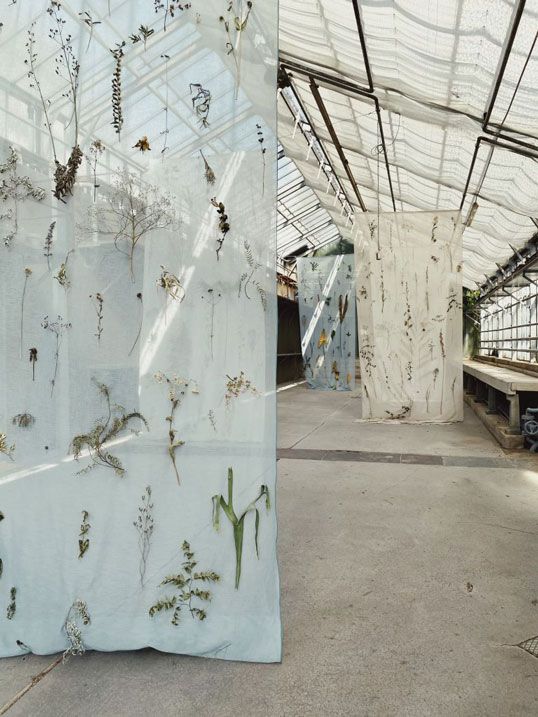
This is the playful work of Evalie Wagner, the Austrian artist who honoured us with an interview. She was born in Austria in 1983 and studied Fine Arts at the University of Art and Design Linz.
She’s an interdisciplinary artist working with flora, painting and doing site-specific works, who describes her style as “poetic and conceptual”; her work has a great deal of metaphorical resonance. Her background in agriculture and gardening is evident in her artwork and design. She sees herself as a “visual storyteller” who immerses herself and her viewers in the theme.
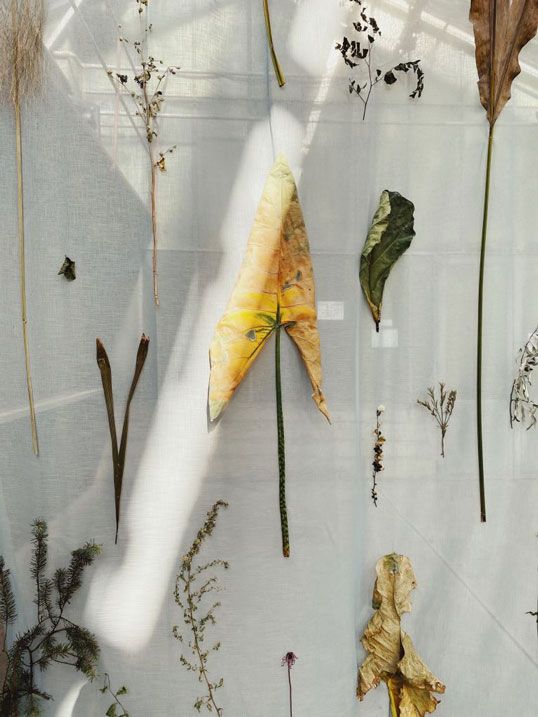
Working interdisciplinarily is very important to her: “This allows me to approach space and a theme in a completely new way each time. I also like the close connection between design and craft. How I start remains the same, but the execution can vary, which gives me a certain freedom that I really appreciate.”
She describes her process as both impulsive and meticulous, and it shows in her work. Avantgarden retains the careful precision of a scientific exhibit with a whimsical free spirited air.
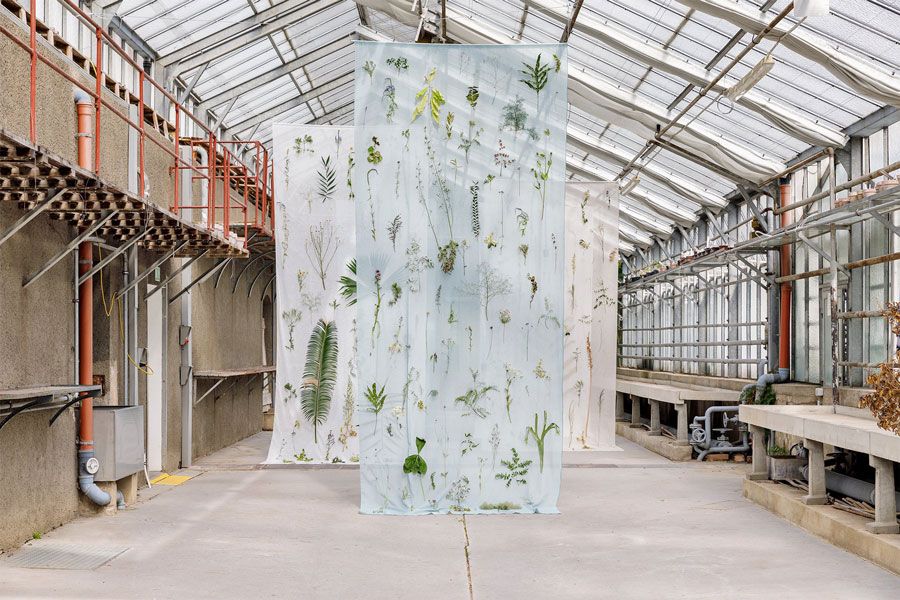
In previous interviews she has said that becoming an artist simply happened, but she thinks differently now, “The urge to create was somehow always there, but to become an artist, it took a lot of stamina.”
For Wagner, Avantgardening is the name she gives to her nature works: “A conglomerate of the avant-garde, an aesthetic and political movement that usually initiates new ideas and developments, and the garden, a man-made piece of nature,” she says about the name. “An attempt at a new perspective on the perception of the plant environment around us.”
This walk-in installation at the Botanical Garden of the University of Vienna features a "hanging herbarium" featured in a greenhouse. This installation imbues the viewer with the exact sense of wonderment she told us she hopes to inspire.
Her work is immersive and wonderfully whimsical. She takes advantage of the natural shapes and colours found in nature.
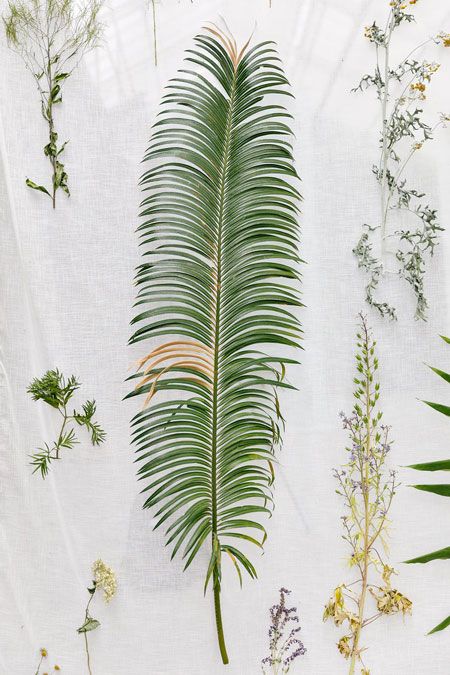
“I wanted to open other people's eyes to the nature they have in front of them. It's mostly about opening the senses to create empathy,” she said of her Avantgarden installation. “I think you need to be emotionally involved to care about anything, including the environment.”
Her works bring us back into contact with nature even in urban and industrial spaces in an ever-increasing era in which we move further from it. Wagner describes something called “plant blindness”—our brains glossing over the plants in our environments and deliberately challenging us.
The ephemeral materials she chooses are a deliberate choice and continuously inspire her: “In a world full of things, I find it interesting to work with material that composts and disappears again. The process of change always plays a big part in working with plants and is also a challenge every time, but I think that makes an installation like this particularly intense.”
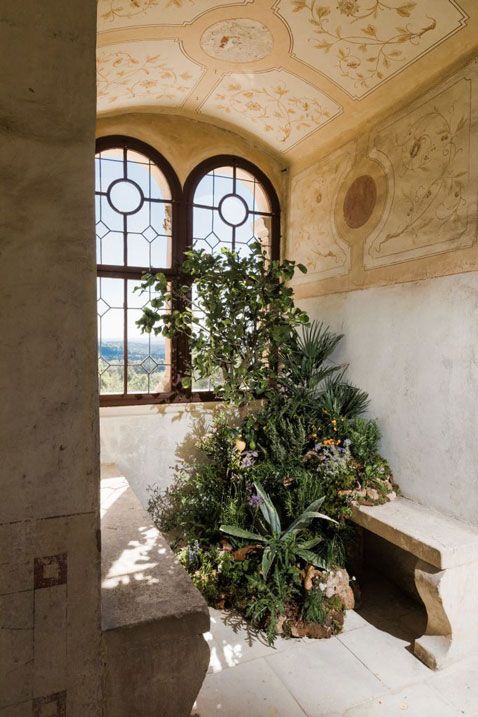
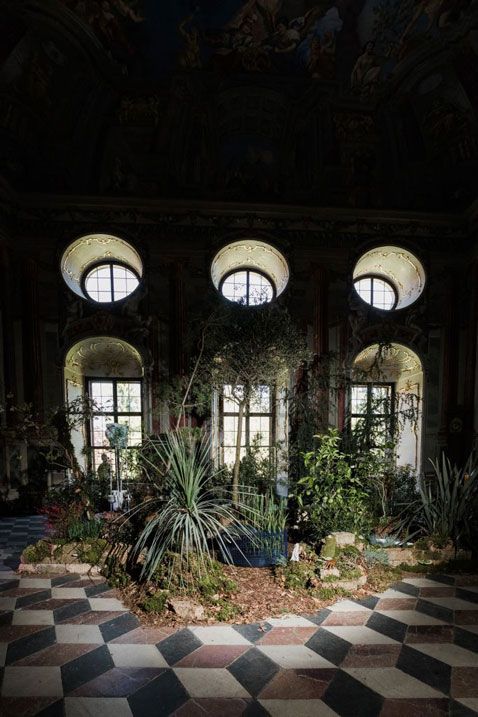
Her Vienna Design Week project, Naturphilia, brings together nature in design to transform what could be an everyday space into a wondrous wild habitat. The space feels simultaneously intentional and wild, natural and domestic—nature is encroaching on our human habitat.
Ombrosa creates a similar effect with a darker undertone. “Plants are the protagonists” of this installation standing in stark contrast with the urban space. The green, soft shapes and uneven textures of citrus trees and palms standing against the smooth textures and angular shapes of the room.
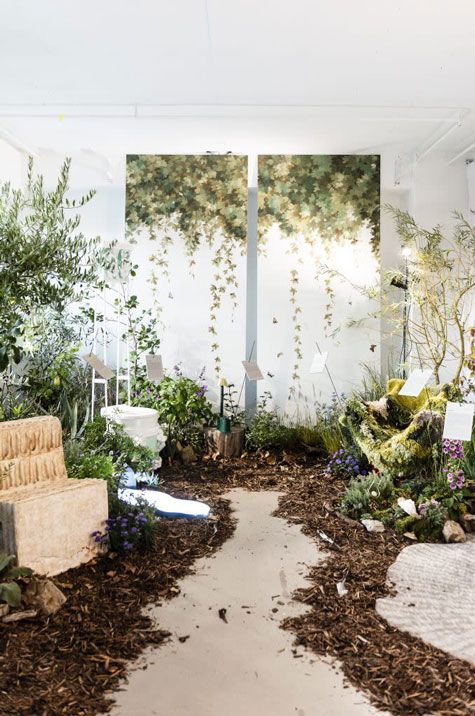
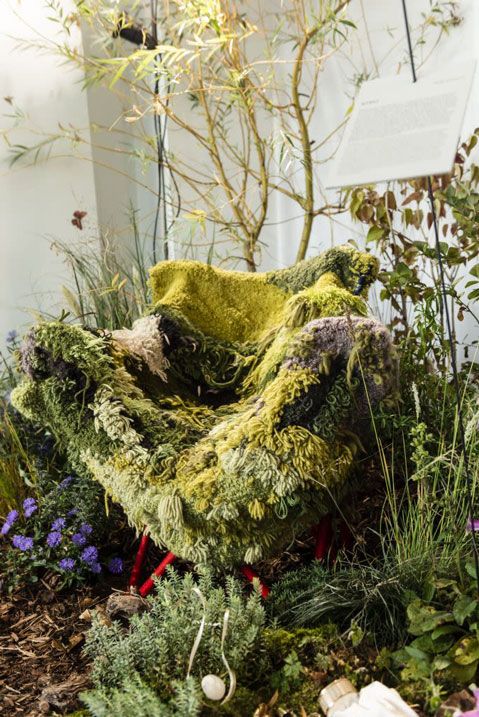
“There's always been a place for plants in art,” she said to Plantopia. “Over the centuries, botany has been used as a metaphorical means of investigating impressions, cultural influences and social and aesthetic questions.” Her work aligns with the United Nations Sustainable Development Goal for Responsible Consumption and Production.
So what does the future hold for her? Well, she’s got plenty of ideas: “At the moment I am working on a tiny glass house, a hanging plant installation in a church is being planned and maybe there will be a project that takes me to the mountains. And meadows, I have that thing for meadows. That will definitely be a project one day.”
To keep up with her work or to see more, you can find her website here.
